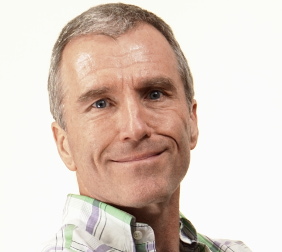SMPTE 2017: Q&A—Bruce Devlin, Incoming SMPTE Standards Vice President
Shortly before the SMPTE 2017 Technical Conference & Exhibition Bruce Devlin shared his thoughts with TV Technology about the SMPTE Standards process.
TV TECHNOLOGY: It seems as if SMPTE has made an effort to accelerate its standardization process, within the bounds of what is allowed for a due-process standards body. What has been driving this effort? What steps have been taken? Are there others that can be made to expedite the process further?

BRUCE DEVLIN: SMPTE is perceived to have a velocity problem with its standards, so we did a little investigation and comparison with other organizations and discovered that a large problem was the perception of how long it takes to do a standard. The fast standards that are well-prepared, non-controversial and well-managed can go from proposal to publishing in around six months and there are examples in the IMF suite of such documents. Other standards that are breaking new ground and have been subject to design discussions and prototype interoperability testing take longer.
SMPTE's process is designed to deliver a quality, stable standard that has a long life. When you're breaking new ground, this can take time for the standard's working group to reach agreement. The time taken to negotiate agreement can vary. When folks are keen to get products into the market or to get projects up and running, this can be frustrating for some people and can give the impression that SMPTE's process is slow. I believe, though, that SMPTE's process delivers good and stable standards.
Not everyone needs a full standard though. Often what's needed is a specification that constrains one or more standards for a specific need. SMPTE is introducing a new specifications process that is being trialled with the U.K.'s Digital Production Partnership. The goal here is to have a more nimble process that encourages the user community to look at the business applications of the standards to create interoperable ecosystems that deliver media and entertainment more efficiently.
TVT: What are the most important lessons you have learned from development of the MXF and IMF standards? Will you be able to apply them to the larger task of being SMPTE Standards Vice President and ensuring the standards process momentum continues?
DEVLIN: The most important lesson that I have learned is that there are different users of a standard and that SMPTE should continue moving in a direction that makes it really easy for its standards customers, if you like, to get at the data. One of the most important customer types is the developer. Most of SMPTE's standards today will result in software being written for CPUs or GPUs or TPUs or FPGAs. I hope to help SMPTE make the data in its standards more accessible for developers so that it's easier to implement compliant, interoperable products and services.
Twenty years ago the industry was battling physics to make innovative products. Today, if you can imagine it, then you can build it. So we're looking at ways in which SMPTE can help make it easier for anyone in a development team to get it right quickly. We already have projects with sample code and software schema, but I am sure that we can do more.
TVT: What one or two things are you most looking forward to in your new SMPTE role?
DEVLIN: The two things that I am looking forward to most in the new role as SMPTE Standards Vice President are actually two different takes on the same theme. Firstly, I want to make access to standards and specifications for SMPTE's customers easier. Secondly, I want to create a communications ethos where we tell the industry what we're doing and why it's relevant at both a technical and a business level. The process of making a standard might be considered rigid and boring, but the products and services that are built on those standards are exciting and game changing. I'm not sure that standards development will ever be fun, but I hope to bring a bit of "buzz" to how SMPTE tells the world what we're up to.
TVT: Can SMPTE continue to remain relevant as a standards body as media technology increasingly is gobbled up, morphed and squirted out by other larger industries and giant corporations?
DEVLIN: SMPTE is the only organization that specifies the end-to-end ecosystem for delivering photons that arrived in the movie camera to your eyeballs. In an upcoming episode of Bruce's Shorts I explain that there are around 150 SMPTE standards needed to deliver a movie to you when you sit at home and watch it on Netflix. At the conference we have speakers from Google, Microsoft and Amazon with representation from all the major broadcasters and studios. Media technology is actually fragmenting into loosely coupled software services that need to be joined up for the end-to-end multi-platform ecosystem to work. SMPTE is the only organizationwith the technical reach, geographic reach and mix of skills to do that. I believe SMPTE will become more relevant and not less.
Get the TV Tech Newsletter
The professional video industry's #1 source for news, trends and product and tech information. Sign up below.
